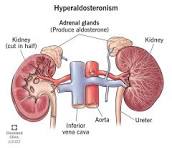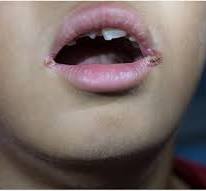INTRODUCTION:
Health is wealth—a simple yet profound truth. One sickness can drain a
lifetime of savings, leaving individuals and families in distress. While modern
medicine has made remarkable strides in diagnosing and treating diseases, many
health conditions continue to defy medical solutions, pushing us to explore
alternative approaches.
Natural remedies have been a cornerstone of healing for centuries, long before
the advent of modern pharmaceuticals. Across cultures and civilizations, people
have relied on nature’s gifts—herbs, roots, fruits, and holistic practices—to
restore health and vitality. While this encyclopedia does not seek to undermine
the importance of medical science, it aims to complement it by shedding light
on time-tested natural solutions. It encourages further research into the power of
nature in healing, offering insights into remedies that have provided relief to
countless individuals.
NATURAL REMEDIES FOR BLADDER INFECTION
A bladder infection, clinically referred to as cystitis, is one of the most
common types of urinary tract infections (UTIs), particularly in
women. It typically results from bacterial infiltration of the bladder,
with Escherichia coli (E. coli) being the most prevalent cause.
Symptoms include a strong, persistent urge to urinate, a burning
sensation during urination, cloudy or strong-smelling urine, and pelvic
discomfort. Although antibiotics are the standard and most effective
treatment, several natural and home-based remedies may assist in
symptom relief and infection prevention when used alongside
professional care.
1. Cranberry Juice or Extract
Cranberries have long been used in traditional medicine for
urinary health.
How it works: Cranberries contain proanthocyanidins, which
may prevent E. coli bacteria from adhering to the bladder lining,
thereby reducing the risk of infection recurrence.
Preparation: Use unsweetened cranberry juice or standardized
cranberry extract supplements.
Usage: Consume 8–16 ounces of unsweetened cranberry juice
daily or take a daily dose of extract as recommended on the
supplement label. Avoid juices with added sugar, as sugar can
exacerbate inflammation.
2. Probiotics
Restoring and maintaining healthy bacterial flora in the gut and
urinary tract can be protective.
How they work: Probiotics, particularly strains of Lactobacillus
and Bifidobacterium, promote a balanced microbiome, which can
prevent pathogenic bacteria from colonizing the urinary tract.
Preparation: Available in capsules, fermented foods (like yogurt
and kefir), or powder form.
Usage: Follow manufacturer guidelines for daily intake.
Probiotics are most effective when taken consistently over time.
3. Stay Hydrated
Proper hydration is foundational to urinary health.
How it works: Water intake helps dilute urine and facilitates the
frequent flushing out of bacteria before they can establish an
infection.
Usage: Aim for 8–10 glasses (about 2–2.5 liters) of water per day
unless otherwise advised by a healthcare professional.
4. D-Mannose
D-Mannose is a simple sugar found in cranberries and other fruits.
How it works: It binds to E. coli bacteria, preventing them from
sticking to the walls of the bladder and being flushed out with
urine.
Preparation: Available as powder or capsules in most health
stores.
Usage: Follow dosage instructions on the label. Typically, 1.5–2
grams taken twice daily during an infection is recommended, but
always consult with a healthcare provider.
5. Warm Compress
Thermal therapy can help ease pain associated with bladder
inflammation.
How it works: Heat applied to the lower abdomen relaxes
muscles and may reduce cramping and bladder pressure.
Preparation: Use a hot water bottle or microwaveable heating
pad wrapped in a towel.
Usage: Apply for 10–15 minutes at a time, ensuring the
temperature is comfortable and not too hot to avoid burns.
6. Avoid Irritants
Certain foods and beverages can worsen symptoms by irritating
the bladder lining.
How it works: Reducing intake of irritants minimizes
inflammation and discomfort during recovery.
Usage: Temporarily eliminate caffeine, alcohol, spicy foods,
citrus fruits, and artificial sweeteners from the diet during an
infection.
7. Urinate Frequently
Bladder hygiene practices play a significant role in recovery.
How it works: Holding urine allows bacteria to multiply,
increasing infection risk. Frequent urination helps flush bacteria
from the urinary tract.
Usage: Respond to the urge to urinate promptly. Ensure complete
emptying of the bladder each time.
Key Considerations
Natural remedies can support recovery and reduce the frequency of
bladder infections, but they do not replace antibiotic treatment, which
remains the cornerstone of care for bacterial UTIs. Untreated bladder
infections may progress to more severe kidney infections
(pyelonephritis) or lead to recurrent issues.
If symptoms persist beyond
24–48 hours, worsen, or include fever, back pain, or nausea, immediate
medical consultation is essential. Natural strategies should always be
discussed with a healthcare provider to ensure compatibility with
prescribed medications and to avoid interactions, especially with
supplements like D-mannose or cranberry extract that may affect
certain health conditions.



